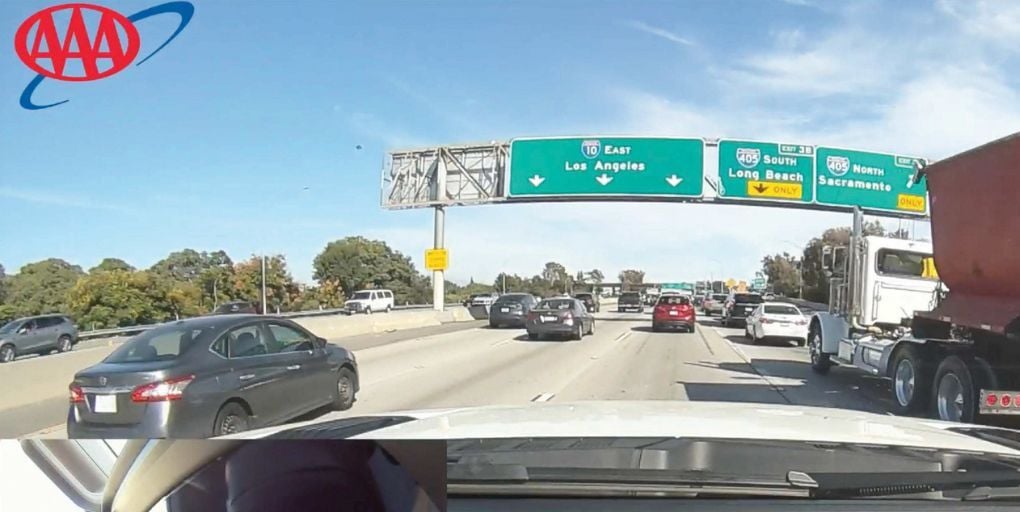The American Automobile Association (AAA) is sharing its latest Active Driver Assistance technology study. The study evaluated the Traffic Jam Assistance (ADA) feature. Researchers say the evaluation found that when the feature is enabled, drivers intervene roughly every 9 minutes on average in heavy traffic. Traffic Jam Assistance is also known as low-speed-capable ADA. Designed to operate in heavy traffic, it incorporates Adaptive Cruise Control snd Lane Centering.
Overall Results
AAA says its engineers tested five passenger vehicles with the system in heavy traffic and compared both hands-on and hands-off ADA performance. Notable events occurred every 9 minutes on average - with the most common being cut ins and poor lane centering.
In total, AAA says that notable events were recorded every 3.2 miles, which is approximately every 9.1 minutes on average. A “notable” event was defined as any situation in which the ADA system failed to handle the driving conditions adequately, as determined by the researcher at the wheel, driving the vehicle.
- The most common incidents reported were inadequate responses to cut ins, which required a researcher to intervene 90% of the time. Cut ins are defined as instances when a vehicle enters the lane directly in front of the test vehicle.
- The second most frequent issue was inadequate Lane Centering Assistance. Lane Centering is a driver assistance system that uses cameras and other sensors to keep a vehicle centered within its lane, providing steering assistance to prevent drifting.
Hands-on and Hands-off System Comparison
AAA says its engineers reported a difference between hands-on and hands-off ADA systems. Hands-on systems require the driver to keep their hands on the steering wheel while the ADA system is in use. The ADA system utilizes sensors such as cameras and radar to monitor the driving environment (road condition, lane lines, etc.).
Hands-off systems allow the driver to remove their hands from the steering wheel in most situations but may require them to put their hands back on in certain conditions. These systems use similar sensors, but they also commonly rely on roads that are pre-mapped in the system.
- The findings revealed that drivers of hands-on systems had to intervene due to driving events three times more frequently than those for hands-off
- Though hands-free most of the time, drivers using hands-off systems were asked to re-engage by placing their hands back on the wheel approximately once every 5 miles or every 15.3 minutes, requiring continuous driver engagement.
Recommendations
AAA's message to drivers is that adding advanced vehicle technology into our daily routines offers both benefits and challenges. To help improve road safety, it recommends drivers:
- Remain in control and be prepared to intervene by braking or steering at all times while using ADA systems. Evaluated ADA systems are never a substitute for an engaged driver.
- Eliminate distractions, including interacting with a smartphone. The need for the driver to intervene while using ADA systems can be frequent, especially in high traffic areas.
- Maintain awareness, stay engaged, and remain in complete control of the vehicle at all times, regardless of the advanced driving assistance systems in use.
- Be familiar with how their system operates. Read the vehicle owner’s manual to learn when, where, and how to use them.
- Select a following distance that suits the driving situation to allow for more time to react to a situation and intervene when needed.
AAA's message to the industry is to prioritize safety when developing and utilizing this technology. AAA says it aims to collaborate with industry leaders to enhance testing and expand consumer education about autonomous systems as they become more widely used. AAA encourages automakers to focus on:
- Enhancing ADA performance, particularly focusing on improving cut-in response and lane-centering behavior.
- Improving the visibility of alerts related to the deactivation of ADAS features to ensure drivers are aware when features are active or inactive.
